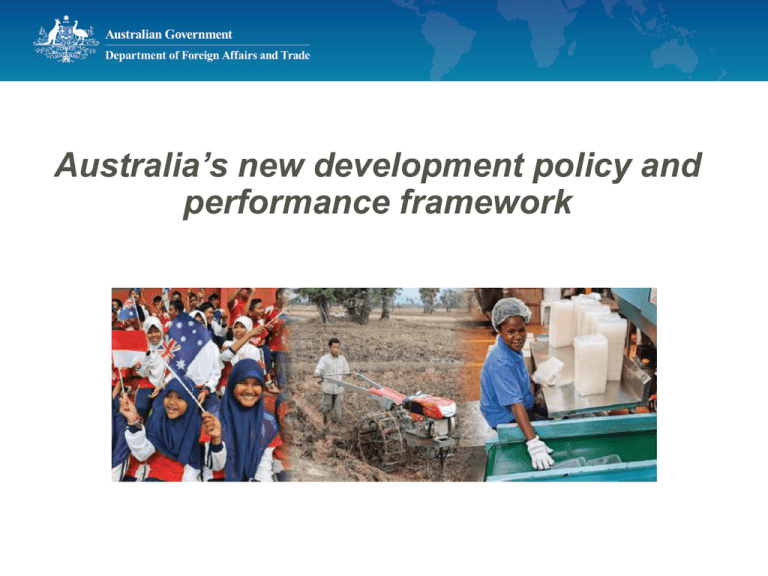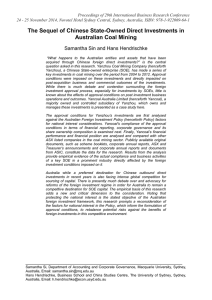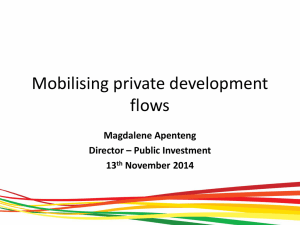Making Performance Count - Australian Disability and Development
advertisement

Australia’s new development policy and performance framework Australian aid: promoting prosperity, reducing poverty and enhancing stability The purpose of the aid program is to promote Australia’s national interests by contributing to sustainable economic growth and poverty reduction. Responds to the changed global development landscape to ensure Australia’s aid program remains effective Strengthens the focus on private sector development - including aid for trade - recognising the private sector as the primary driver of economic growth and poverty reduction Supports human development to drive improvements in education, health and gender equality outcomes in our partner countries Strengthens focus on gender equality and empowering women and girls Sharpens the geographic focus on the Indo-Pacific region Encourages innovation, taking calculated risks to tackle development challenges TARGETS Making Performance Count 10 Targets for the Entire Aid Program PERFORMANCE BENCHMARKS Budget Allocations/ Performance Incentive Fund Country and regional programs Multilateral Programs and Other Partners Individual Investments Making Performance Count Strategic targets 1. Promoting prosperity: Promote economic development by increasing Australia’s aidfor-trade investments to 20% of the aid budget by 2020. 2. Engaging the private sector: All new investments will explore innovative ways to promote private sector growth or engage the private sector in achieving development outcomes. 3. Reducing poverty: By July 2015, all country and regional programs have Aid Investment Plans that describe how Australia’s aid will promote economic growth in ways that provide pathways out of poverty. 4. Empowering women and girls: More than 80% of investments, regardless of their objectives, will effectively address gender issues in their implementation. 5. Focusing on the Indo–Pacific region: Increase the proportion of country program aid that is spent in the Indo–Pacific region to at least 90% from 2014-15. Making Performance Count Strategic targets 6. Delivering on commitments: From July 2015, progress against mutual obligations agreed between Australia and its key partner governments and organisations will form part of program performance assessments. 7. Working with the most effective partners: By July 2015, design and apply new systems to assess the performance of the aid program’s key delivery partners and ensure stronger links between performance and funding. 8. Ensuring value-for-money: Deliver high standards of value–for–money in at least 85% of aid investments. Where standards are not met and improvements are not achieved within a year, investments will be cancelled. 9. Increasing consolidation: Reduce the number of individual investments by 20% by 2016–17 to focus efforts and reduce transaction costs. 10. Combatting corruption: Develop and implement new fraud control and anti–corruption strategies for all major country and regional programs by July 2015. Making Performance Count Key commitments: • Performance benchmarks to be developed for country and regional programs, tailored to the context and priorities of each program. • Mutual obligations will be introduced for partner governments, reflecting existing reform commitments of relevance to Australian aid investments • Performance benchmarks and mutual obligations set in Aid Investment Plans and reported annually in Aid Program Performance Reports. • A new Performance Incentive Fund commencing in 2015-16 will provide programs that perform well with access to additional funding. • Aid investments found to be performing poorly under annual Aid Quality Checks will be cancelled if they do not improve within one year. • A new annual Performance of Australian Aid report to be published from this year.











